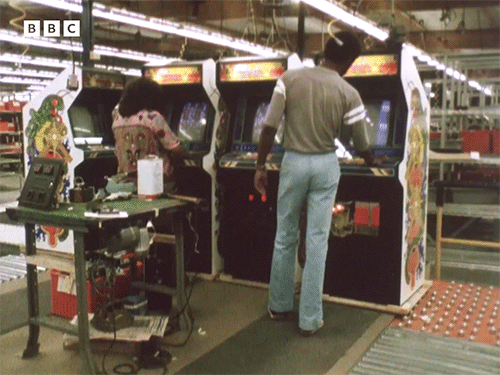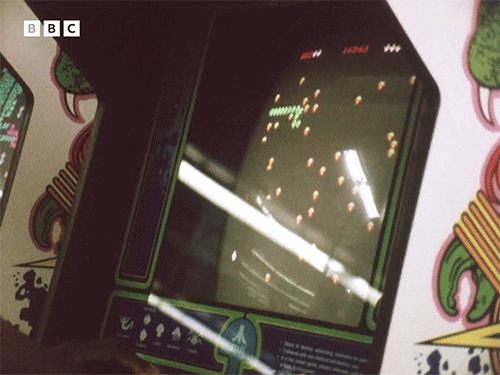I'm interested in many User Interfaces, like GUI, electronic devices, retro computers, round bottoms...
Don't wanna be here? Send us removal request.
Text








Panasonic FS-A1GT (1992)
The Panasonic FS-A1GT MSX turbo R is the last MSX computer ever produced and follows the latest standard for the MSX line.
Originally, in 1990, Yamaha and ASCII announced the V9978 Video Display Processor, the video chip for the MSX3. It was a very capable video IC, with two different sets of video modes. In bitmap modes, it was capable of up to 768 x 240 resolution (up to 768 x 480 in interlace mode), up to 32,768 colors, superposition, hardware scrolling, and even a hardware cursor for Windows-like operating systems. However, the most impressive feature of these modes was the use of a fast hardware bitblock data mover. The MSX2 video IC was also equipped with a hardware bit mover, but the new one would be 20 times faster!
In pattern mode, it was able to use SNES class features. Multiple layers, 16k patterns, different palettes, 128 sprites, maximum 16 sprites per scanline. So basically an SNES but without mode7. However, something went wrong and the project was cancelled. Probably because of the great interest in marketing MSX machines and the growing interest in game consoles and powerful PC-like computers (mainly for word processing purposes), companies were less enthusiastic about making a new MSX machine. MSX's biggest software supporters defected to Nintendo and other computers/gaming machines. Sony chose to make their own game console.
Instead came the MSX Turbo-R, a supercharged MSX2+. Some people say that ASCII failed to deliver the new VDP in time for the 1990 release, so they only opted for the new CPU (named R800). However, the specifications and pinout of the V9978 were in some data books of the era.
Panasonic was the only company to manufacture and market MSX turbo R computers, and they were only sold in Japan. Several machines were imported to Europe via gray market imports.
The FS-A1ST was the first and was succeeded by the FS-A1GT, which had more RAM and MIDI IN and OUT.
After these two machines, it ended when Panasonic moved to their 3DO game console.
Detailed Specifications
CPU R800 (DAR800-X0G), with 28.63630 MHz external clock and 16-bit ALU.
CPU Z80A 3.579545MHz compatible (included in the MSX-Engine)
256kB of main RAM (can be natively expanded to 512kB internally)
16kB SRAM for backup (used internally)
32kB BASIC/BIOS ROM and 32kB sub-ROM
TC8566AF disk controller
3.5" double sided double density (720kB) disk drive
S1990 MSX Bus-controller
T9769C MSX-ENGINE (also contains Z80A & AY-3-8910)
MSX-JE (a simple Kanji input interface)
Kanji-ROM with approx. 32000 characters
MSX-Music (Yamaha YM-2413 OPLL)
DAC to PCM 8-bit sample rate up to 16kHz
Internal microphone for the PCM unit
More info: https://www.msx.org/wiki/Panasonic_FS-A1ST
#msx#msx2#old tech#panasonic#vintage computer#computer#8bit#z80#industrial design#retrogaming#retro gaming#hardware#electronics#retrocomputing#retro computing#retro tech#retro games#japan#japan only#japan computer#90s
26 notes
·
View notes
Text






One of the most defining 16bit computers was introduced in June 1985.
ATARI ST 520
DESIGN HISTORY & STRATEGY
The Atari ST series was born in a turbulent time: Atari had just been acquired by Jack Tramiel, founder of Commodore, after leaving that company. Tramiel pushed for a quick-to-market product to compete with the Apple Macintosh and Commodore Amiga.
Development time: Less than one year — an aggressive schedule for a 16-bit GUI-based machine.
Initial models: The Atari 520ST was the first to ship, showcased at CES in 1985.
Innovative design: All-in-one casing (mainboard + keyboard), like the Amiga 500, but with better modularity (external floppy drive, monitor, etc.).
Former C=64 developer Shiraz Shivji led the design team. He tells a story about the Atari ST/Commodore Amiga history (source) "It is very interesting that the Warner Atari difficulties were due to Tramiel’s Commodore. The Commodore 64 was much more successful (I would say wildly successful) compared to the Atari Computers such as the 800 and the 400. We were also taking away sales from the video games division, the Atari 2600. Jay Miner was at Atari in the old days and was involved in the design of their products. He left Atari to design the Amiga. Atari had funded some of this effort and had an option to buy the Amiga. When we took over Atari in July 1984, the first order of business was to decide what to do with this option. The problem was that the Amiga was not quite ready and would need a lot of money to acquire. We decided to pass on Amiga, but this put enormous pressure on our own development team. Commodore, on the other hand, did not have an internally developed 32-bit graphics-oriented machine and did not have the confidence to develop the machine internally. They ended up buying Amiga for between $25-$30 million and spent a further $20 million or so and yet came out with a product a little after Atari. The roles were reversed, the Atari ST has a Commodore pedigree, while the Amiga has an Atari pedigree!"
MIDI AND MUSIC PRODUCTION
The 520ST included built-in MIDI ports — a revolutionary move. At the time, most other computers needed expensive third-party MIDI interfaces.
Key Software:
Steinberg Cubase – became the industry standard for MIDI sequencing.
Notator – early version of what later evolved into Logic Pro.
Pro 24, Dr. T's, and Hollis Trackman – widely used for composing, sequencing, and syncing synthesizers.
Used by Artists:
Fatboy Slim composed with the ST well into the 2000s.
Jean-Michel Jarre, Vangelis, The Chemical Brothers, and Underworld used it in studio setups.
Many studios kept an Atari ST just for MIDI due to its tight timing and reliability.
SOFTWARE ECOSYSTEM
TOS/GEM: A fast and responsive GUI OS that was very usable on 512KB of RAM.
Productivity apps:
Calamus DTP – high-quality desktop publishing
NeoDesk – an improved desktop GUI
GFA Basic – a powerful programming environment
Graphics tools:
Degas Elite, NeoChrome – pixel art, animation
Spectrum 512 – used clever tricks to display 512 colors
While the Amiga had better graphics and sound, many games were first developed for the ST, then ported to Amiga. Key games:
Dungeon Master – first-person RPG with real-time mechanics
Carrier Command, Starglider, Blood Money, Rick Dangerous
Flight simulators, strategy, and adventure games flourished
CULTURAL IMPACT
In Europe (especially the UK, Germany, France, and Hungary):
The ST became a cornerstone of bedroom coding, Demoscene, and music production.
Local software houses and users created a vibrant community around the machine.
The Atari ST was used in schools, small studios, and households well into the early '90s.
In education: The ST's affordability and easy-to-use software made it a favorite in European schools and computer labs.
DECLINE & LEGACY
By the early 1990s, the ST line was losing ground to IBM-compatible PCs and faster Amigas.
Later models like the STE, TT030, and Falcon 030 tried to revitalize the line, with limited success.
Atari shifted toward consoles (like the Jaguar) and left the computer market.
Long-term legacy:
The Atari ST's MIDI legacy lives on — it helped standardize digital music production workflows.
Many musicians and retrocomputing fans still collect and use STs today.
A vibrant retro software/demo scene remains active, especially in Europe.
#atari#atari st#anniversary#tech#technology#old tech#retrocomputing#retro computing#retro gaming#retrogaming#midi#cubase#calamus#notator#degas elite#16bit#Dungeon Master#Carrier Command#Starglider#Blood Money#Rick Dangerous#Flight simulators#80s#80s computer#fatboy slim#chemical brothers#jean michel jarre#vangelis
12 notes
·
View notes
Text
NINTENDO GAMEBOY
Being a non-gamer, then Nintendo President Hiroshi Yamauchi would give the game to his superstar programmer Shigeru Miyamoto, the creator of their most popular franchises Super Mario and The Legend of Zelda, to see what he thought. Several days later, Miyamoto confirmed to Yamauchi that it was a great game and when Yamauchi asked why, Miyamoto responded “Because even your secretaries and accountants are playing it!"
video source: https://www.instagram.com/reel/DHJ3HB-tu2P
Release Date: • Japan: April 21, 1989 • North America: July 1989 • Europe: 1990
Manufacturer: Nintendo Designer: Gunpei Yokoi & Nintendo R&D1 Display: 2.6" monochrome LCD (160×144 resolution) Audio: Mono speaker, stereo via headphones Power: 4 AA batteries (10–15 hours playtime) Multiplayer: Game Link cable (for games like Tetris and Pokémon)
Key Features: Portable: One of the first truly successful handheld consoles. Durable Build: Known for its toughness—could survive falls and rough handling. Cartridge-Based Games: Swappable game cartridges. Simple Controls: D-pad + A, B, Start, Select buttons.
Iconic Games: Tetris – bundled with the console, helped it become a global success. Super Mario Land – Mario’s first handheld adventure. The Legend of Zelda: Link’s Awakening – a deep handheld Zelda RPG. Metroid II: Return of Samus – expanded the Metroid series on the go. Pokémon Red & Blue – launched the Pokémon phenomenon.
Legacy: Over 118 million units sold (Game Boy and Game Boy Color combined). Laid the foundation for Nintendo’s handheld dominance. Predecessor to all later Nintendo handhelds: Game Boy Color, GBA, DS, 3DS, Switch Lite.
#retrogaming#8bit#retro gaming#80s#industrial design#z80#retro#nintendo#GB#gameboy#zelda#super mario#tech#technology#old tech#retro tech#vintage tech#technique
18 notes
·
View notes
Text






CRAY 2 (1985) Cray Research
The fastest supercomputer of its day with pioneering liquid-cooled processing power.
Amongst the significant advancements in supercomputing, the Cray-2 holds a prominent place for its innovative design and advanced computational capabilities. Introduced in 1985, this supercomputer was developed by Seymour Cray and produced by Cray Research, with an initial cost of approximately $16 million. It represented a considerable advancement in the field of high-performance computing.
Like its predecessor the Cray-1, the Cray-2's design was notable for its cylindrical form, which was a departure from the conventional rectangular configurations of earlier supercomputers. This design was not merely aesthetic; it addressed practical challenges associated with cooling. The cylindrical shape facilitated the use of a Fluorinert cooling system, effectively managing the substantial heat generated by its processors and allowing for increased operational speeds and enhanced reliability. The distinctive "waterfall" cooling system became emblematic of high-performance computing in popular culture.
Central to the Cray-2's capabilities was its processing power. It was capable of performing up to 1.9 billion floating-point operations per second (FLOPS), making the fastest computer of its time. This computational capability enabled more sophisticated and rapid analysis in various scientific fields, including molecular modeling and fluid dynamics. Researchers were able to undertake complex simulations and computations with greater efficiency than was previously possible.
Its influence extended beyond its period of active use, setting a new benchmark for supercomputing architecture and performance. The design and technological advancements introduced by the Cray-2 had a lasting impact on subsequent generations of high-performance computing systems. Only 25 were sold. This Cray- 2 was a custom Cray-2 for REI with more memory than a standard Cray-2, the first of only three built. It is also believed to be the longest running system for REI and possibly the longest running Cray-2 for the world when it was shut down in 1999.
Approximate overall dimensions of supercomputer: 6 ft. 8 in. (2 m.) high, 14 ft. 5 in. (4.4 m.) wide, 11 ft. 6 in. (3.5 m.) deep.
Comparison to later computers
In 2012, Piotr Luszczek (a former doctoral student of Jack Dongarra), presented results showing that an iPad 2 matched the historical performance of the Cray-2 on an embedded LINPACK benchmark.
#cray#cray research#cray 2#super computer#retrocomputing#retro computing#retro tech#technology#computer#vintage computer#vintage computing#computers#computer history#80s#80s computer
8 notes
·
View notes
Text



APF 'The Imagination Machine' (1979)
The APF Imagination Machine is a combination video game console and home computer system released by APF Electronics Inc. in late 1979. It has two separate components: the APF-M1000 game system and an add-on docking bay with a full-sized typewriter keyboard and tape drive.
The APF-M1000 was built specifically to compete with the Atari 2600. The full APF Imagination Machine, including the APF-M1000 console and the IM-1 computer component, originally sold for around US$599 (equivalent to $2,600 in 2024).
History During the conception of the MP1000, APF management heard that both Atari and Mattel were planning a computer add-on for their upcoming console. Around that time, Irving Boilen, APF’s head of engineering led the design of the PeCos One, the first personal computer made by APF. Short for Personal Computer One, the computer used the JOSS Language (an acronym for JOHNNIAC Open Shop System) instead of the popular BASIC language. Although this choice was not well received by the consumers and the PeCos One was quickly discontinued, this gave the necessary expertise to APF to go forward with another project: the Imagination Machine. Thinking that if they could be Atari to punch, they could get a bigger part of the cake, APF worked tirelessly on their new venture.
#apf electronics#imagination machine#atari#mattel#computer#vintage computer#technology#tech#retro tech#vintage computing#computer history#retro gaming#retro consoles#70s#80s
9 notes
·
View notes
Text


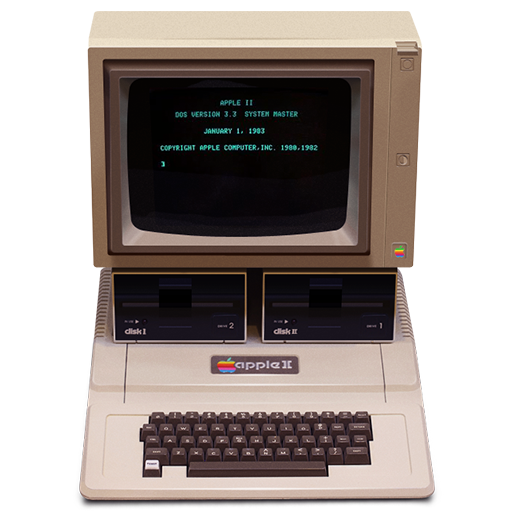


Apple II (June 1977)
The original Apple II was one of the first highly successful personal computers, released by Apple Computer, Inc. (now Apple Inc.) in 1977. It was designed by Steve Wozniak, while Steve Jobs handled the business strategy. The Apple II played a pivotal role in launching the personal computing revolution.
Key Features:
Release Year: 1977
Processor: MOS Technology 6502 at 1 MHz
RAM: 4 KB, expandable up to 48 KB
Storage: Initially used cassette tapes; later supported 5.25" floppy disks (Disk II)
Graphics: Color graphics support — one of the first home computers to offer it
Display: 24 lines × 40 characters text or low-res color graphics (40×48 pixels, 16 colors)
Keyboard: Built-in QWERTY keyboard (initially no lowercase support)
Expansion: 8 internal slots for add-on cards (e.g., sound, memory, network)
Innovations and Impact:
One of the first PCs sold fully assembled in a case with a keyboard and video output — no need for DIY assembly.
Its color graphics and sound capabilities made it popular for games and multimedia software.
Widely adopted in U.S. schools during the 1980s for educational purposes.
Supported BASIC programming, business software, and early video games.
Legacy: The Apple II series (including the II Plus, IIe, IIc, and IIGS) remained in production into the early 1990s. Its commercial success was crucial for Apple's growth and helped pave the way for the Macintosh.
The Apple II is still considered a milestone in computing history, and it is admired for its innovation, accessibility, and influence on the PC industry.
#apple#apple ii#retro computing#retrocomputing#retro gaming#retrogaming#steve jobs#steve wozniak#mos 6502#computer#vintage computer#technology#tech#retro tech#vintage computing#computer history
22 notes
·
View notes
Text







Franklin ACE 1000 (1982)
The Franklin ACE 1000 was an early Apple II Plus clone introduced in 1982 by Franklin Computer Corporation. Designed to offer a more affordable alternative to Apple's offerings, it closely mirrored the Apple II Plus in both hardware and software, including direct copies of Apple's ROMs and operating system. This compatibility allowed the ACE 1000 to run most Apple II software and utilize similar expansion cards.
Key Features:
Processor: MOS Technology 6502 at 1.0 MHz
Memory: 64 KB RAM
Display: Monochrome output by default; optional color support via an add-on chip
Keyboard: Full upper/lowercase support with auto-repeat functionality
Expansion: 8 internal slots for peripheral cards
Storage: External 143K 5.25" floppy disk drive available
Operating System: Shipped with Franklin DOS, a modified version of Apple DOS 3.3
Despite its technical merits, the ACE 1000 became the center of a landmark legal case when Apple sued Franklin for copyright infringement. The case, Apple Computer, Inc. v. Franklin Computer Corp., resulted in a ruling that affirmed the copyrightability of software stored in ROM, setting a significant legal precedent in the software industry.
While the ACE 1000 offered features like a numeric keypad and lowercase text support—enhancements over the original Apple II Plus—it was bulkier and heavier. Today, the Franklin ACE 1000 is considered a collector's item, valued for its role in early personal computing history and the legal battles that shaped software copyright law.
On a side note, the Franklin Ace 1000 made several appearances in popular films. It was seen in the Ghostbusters’ lab in the original 1984 Ghostbusters. You can also see a poster for an ACE 1000 in the background of 1984’s Triumph of the Nerds.
more info: https://computeradsfromthepast.substack.com/p/franklins-ace-1000
https://oldcomputers.net/ace1000.html
#apple ii#apple#franklin ace#franklin ace 1000#MOS 6502#retrogaming#8bit#industrial design#retro gaming#80s#retro#retro computing#apple clone#vintage computing#vintage computer#vintage#retro tech#tech#technology#old tech#ghostbusters
9 notes
·
View notes
Text
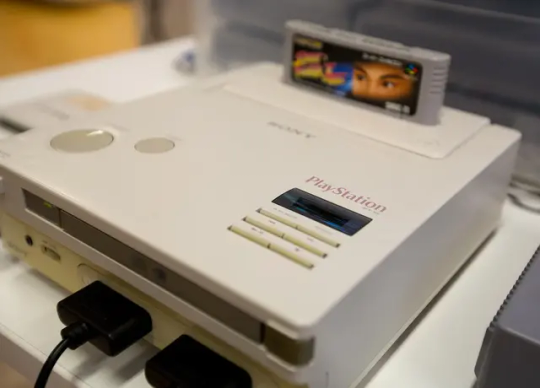
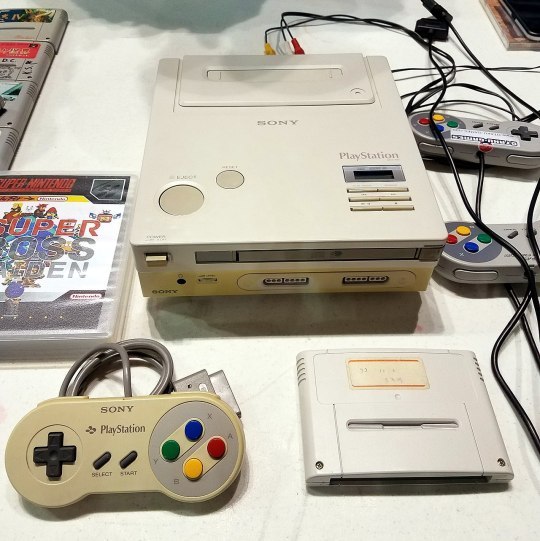
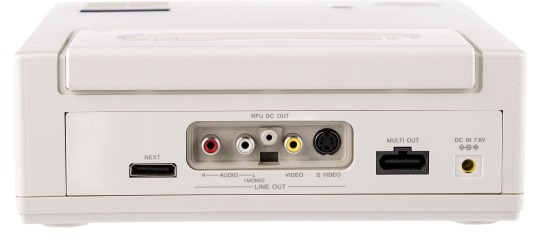

NINTENDO PlayStation (1991)
In 1991, Sony and Nintendo collaborated to release the "SNES-CD" however, the console was never released...
In a nutshell – Nintendo began working with Sony in the early 1990s to develop a CD-ROM expansion for the SNES. The project was called the "PlayStation," but due to business differences, Nintendo eventually partnered with Philips – leaving Sony behind.
Humiliated, Sony built its own console: the Play Station, which revolutionized the gaming industry. What's special about the story is that of the 200 prototypes produced, only one known copy survives.
This episode is one of the most famous “what if” moments in video game history.
More info: KOTAKU – "The Weird History Of The Super NES CD-ROM, Nintendo's Most Notorious Vaporware"
BBC – Nintendo PlayStation: Ultra-rare prototype sells for £230,000
Heritage Auctions – Nintendo Play Station Super NES CD-ROM Prototype
#playstation#snes cd#snes#nintendo#retro gaming#retrogaming#industrial design#retro#90s#retro computing#vintage computer#sony#philips#game consoles#nes#famicom#super famicom#16bit
7 notes
·
View notes
Text






Enterprise 64/128 (1985) (formerly ELAN 64/128)
After the 1982 introduction of the ZX Spectrum, Hong Kong trading company Locumals commissioned Intelligent Software to develop a home computer in the UK. During development, the machine had the codename DPC. The machine was also known by the names Samurai, Oscar, Elan, and Flan before the Enterprise name was finally chosen. The succession of name changes was mainly due to the discovery of other machines and companies with the chosen name.
The Enterprise has a 4 MHz Z80 CPU, 64 KB or 128 KB of RAM, and 32 KB of internal read-only memory that contains the EXOS operating system and a word processor. The BASIC programming language was supplied on a 16 KB ROM cartridge, it had to be inserted into the left side of the machine. Cartridges containing other programming languages (Forth, Lisp, Pascal) were also produced. In this way, games or user programs could be stored on the cartridges. The maximum supported ROM size of the cartridges was 64Kb.
Two application-specific integrated circuit (ASIC) chips take some of the workload off of the central processor. They are named 'NICK' and 'DAVE' after their designers, Nick Toop, who had previously worked on the Acorn Atom, and Dave Woodfield. 'NICK' manages graphics, while 'DAVE' handles sound and memory paging. The Z80, like all 8-bit CPUs, could only address 64 KB of memory, so "bank switching" was required to access more memory. The Enterprise's memory can be expanded to 4 MB without any tricks (and this is a 'plain' 8-bit machine like the ZX-Spectrum or Commodore 64)
Enterprise was announced to the press in September 1983, and some 80,000 machines were pre-ordered by the time of its April 1984 sales launch. The product did not ship until 1985, by which point the UK home computer market was already dominated by the ZX Spectrum, Commodore 64, Amstrad CPC, and Acorn BBC Micro with the 16-bit era on the horizon (Commodore Amiga, Atarti ST, etc)
After the initial manufacturing run of 80,000 units, it is believed that no further units were made, so the Enterprise is among the rarer home computers of the 1980s.
source of images: 8bit home computer museum
more info: https://en.wikipedia.org/wiki/Enterprise_(computer)
https://www.theregister.com/2013/10/24/elan_flan_enterprise_micro_is_30_years_old/
#enterprise128#enterprise64#elan128#elan64#8bit#z80#british 8bit#retrocomputing#retro computing#retro gaming#retrogaming#zx spectrum#commodore 64#amstrad cpc#BBC micro#gif#80s#80s computer#vintage computer#computers
13 notes
·
View notes
Text



HP-01 (1977)
Hewlett-Packard
The Hewlett-Packard HP-01 is a calculator watch. It was designed and manufactured by Hewlett-Packard.
The HP-01's digital display used 7 light-emitting diodes (LEDs)/digit in a 7-digit + decimal point arrangement. Introduced in 1977, at the height of the LED watch craze, it had five models: two gold-filled and three stainless.
Prices ranged from $450 & $550 for the low-end steel or gold to $850 (the equivalent of $2200 to $4200 in 2023 dollars).
HP also sold a battery replacement kit that allowed customers to change the batteries themselves. The watch uses two batteries for the display and one for the processor IC. It also comes with a ballpoint pen with a stylus on the rear end. Most of the 28 buttons on the HP-01 are recessed and designed to be depressed with a stylus stored in the band.
The production was stopped by the end of 1979.
more info: https://www.businessinsider.com/the-first-smartwatch-ever-invented-2016-2
#quartz watch#calculator#hp#hewlett packard#smart watches#watch#led watch#70s#retrocomputing#retro computing
105 notes
·
View notes
Text




PolType/Cyfronex
Polish PolType is a family of microcomputer systems developed by Polish engineers in close cooperation with the Polish representative of the British MonoType company (PolType was acquired by the Cyfronex company in 1986, but the original developers remained with the company).
PolType devices were able to control LaserComp and MonoType Imagesetter machines (Imagesetter produces the printing film from which the printing plate is made – nowadays the plate is made directly, and the film is not needed).
The first generation of Poltype (1988) required its own eight-bit computer, the next, Poltype 03 and 04, used a PC XT class computer.
The 510-key POLSET 04 keyboard (for PolType 04) shown in the first two pictures was also Cyronex's own development. This was also excellent for typing complex mathematical formulas, but through it, the functions of the SW were also available (the mouse and WYSIWYG were still in a very experimental stage at that time)
source:
• Tumbler // sailing the cylindrical sea
• Mikro Klan 1988/1
• Bajtek 1988/5
#poltype#cyfronex#DTP#poland#retrocomputing#retro computing#keyboard#80s#ibm pc#wysiwyg#retro tech#old tech#technology#vintage tech#tech#computer#electronics#hardware#80s computer
397 notes
·
View notes
Text







Twin Famicom
NES with internal Disk system from Sharp
The Twin Famicom is a video game console system that was produced by Sharp Corporation in 1986 (Juli 1) and was only released in Japan. It is a licensed Nintendo product that combines the Famicom (NES) and the Famicom Disk System into a single piece of hardware.
The essential parts of the Twin Famicom include a 60-pin socket for Famicom cartridges and a socket for Disk System disks. The player could switch between the two media types with a switch – cassette "カセット" or disk "ディスク" The Twin Famicom is fully compatible with the NES and can handle accessories made for the NES (e.g. Beam Gun). But there is also an extra port on the Twin Famicom. This allows a 'regular' Famicom to use the Twin Famicom's disk drive.
The original Famicom only has one color combination, and the Twin Famicom was initially sold in two colors: red with black highlights (AN-500R), and black with red highlights (AN-500B). A second version of the system was released in 1987 with a slightly different case design, turbo controllers, and two different color schemes; black with green highlights (AN-505-BK) and red with beige highlights (AN-505-RD).
Like the Famicom, the Twin Famicom uses NTSC but with an AV output rather than an RF modulator with an RCA connector for composite video and mono audio, allowing for greater audiovisual quality on TVs and monitors with such inputs. An external RF modulator is bundled with the unit for connection through a TV's antenna/cable input. The two gamepads are hardwired into the console, so they cannot be disconnected.
More info:
https://ultimatepopculture.fandom.com/wiki/Twin_Famicom
#nintendo#famicom#twin famicom#sharp#nintendo disk system#retrogaming#retro gaming#nes#retro computing#retrocomputing#80s#80s computer#japan only
19 notes
·
View notes
Text

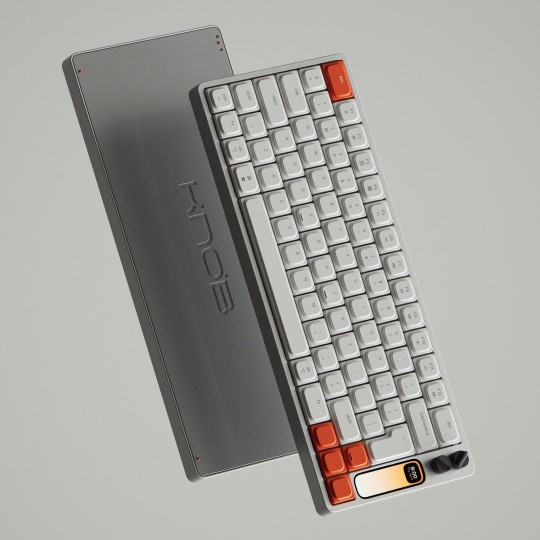

k•no•b•1
The Knob / k•no•b•1 is a low-profile mechanical keyboard being designed by 3D Artist and Motion Designer Ben Fryc, and developed by Work Louder.
https://knob.design/
4 notes
·
View notes
Text






Metallic record player concept
Designer: Jorge Paez
7 notes
·
View notes
Text
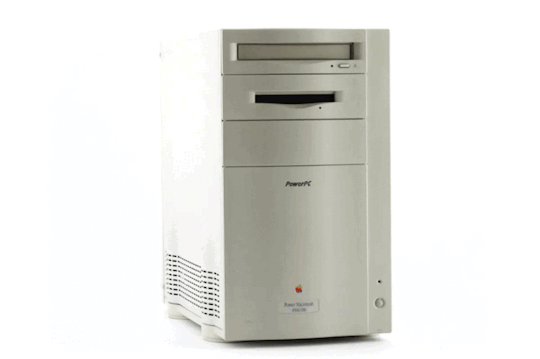
Apple PowerMac 8500 (1995)
The Power Macintosh 8500 is a personal computer designed, manufactured and sold by Apple Computer from August 1995 to February 1997. Billed as a high-end graphics computer, the Power Macintosh 8500 was initially released with a 120 MHz PowerPC 604, and unlike earlier Power Macintosh machines, the CPU was mounted on an upgradeable daughtercard.
Though slower than the 132 MHz Power Macintosh 9500, the first-generation 8500 featured several audio and video (S-Video and composite video) in/out ports not found in the 9500. In fact, the 8500 incorporated near-broadcast quality (640×480) A/V input and output and was the first personal computer to do so, but no hard drive manufactured in 1997 could sustain the 18 MB/s data rate required to capture video at that resolution.
Later, special "AV" hard drives were made available that could delay thermal recalibration until after a write operation had completed. With special care to minimize fragmentation, these drives were able to keep up with the 8500's video circuitry.
5 notes
·
View notes



